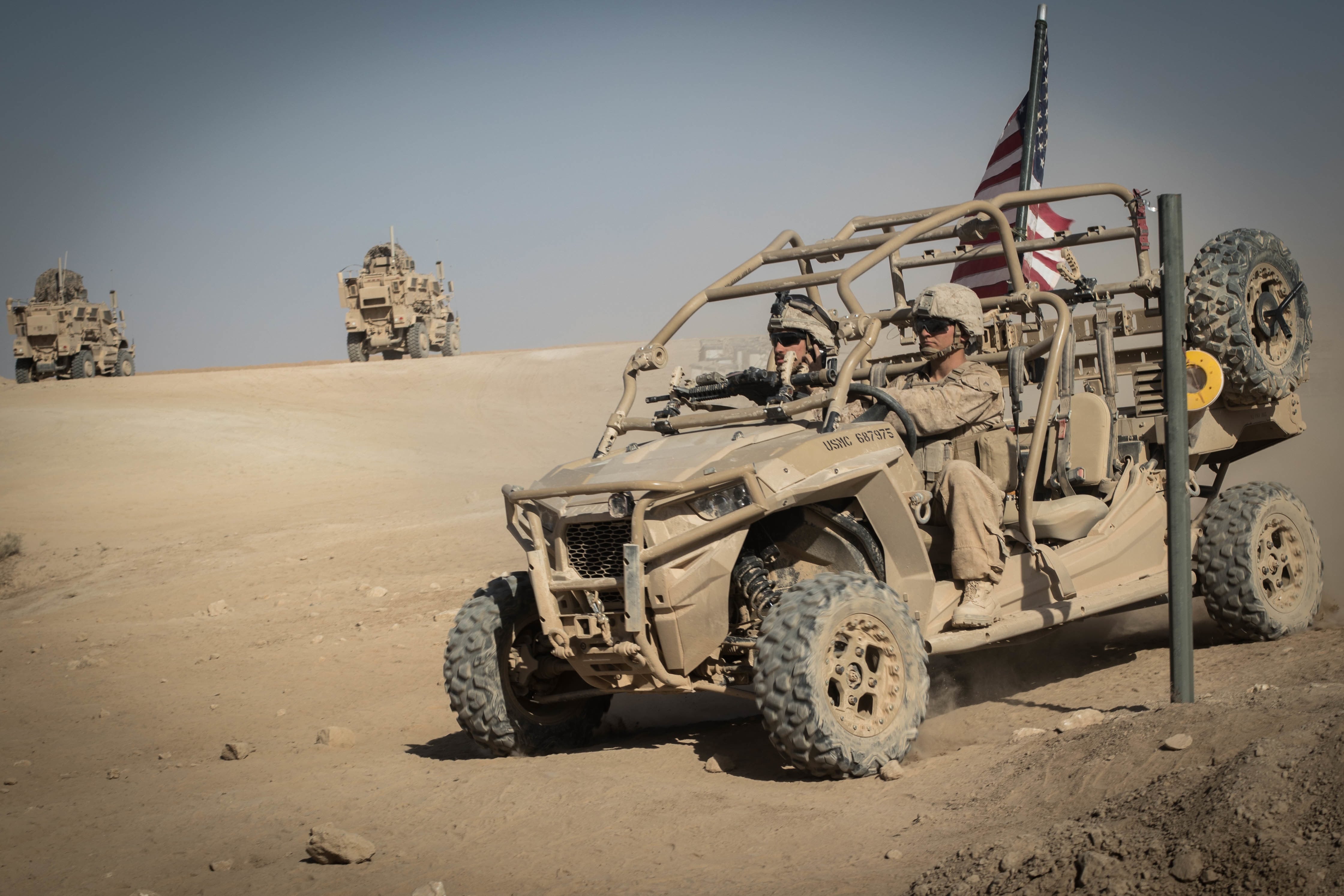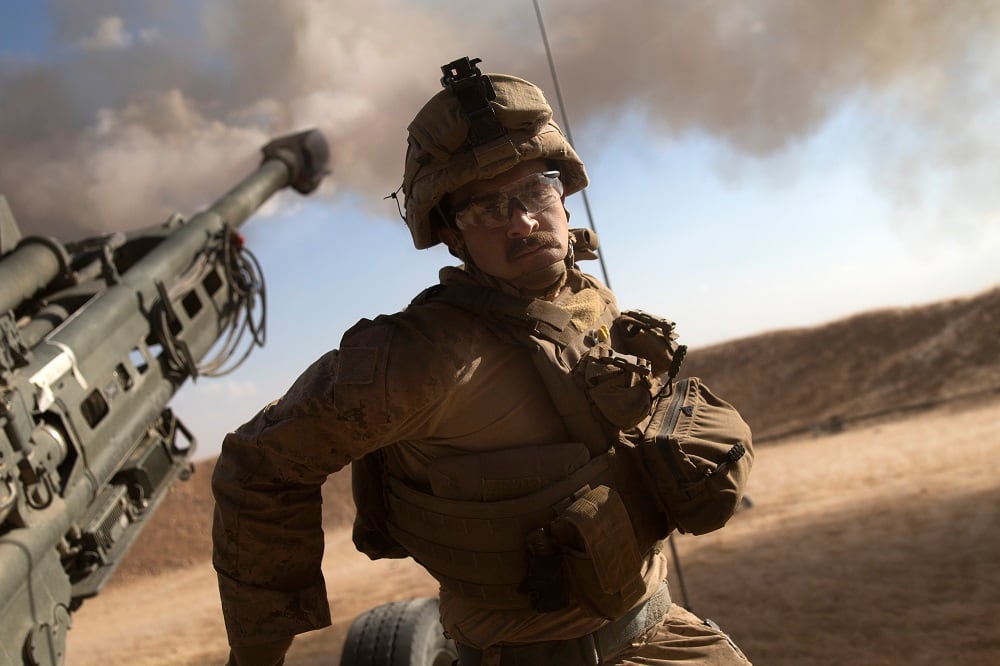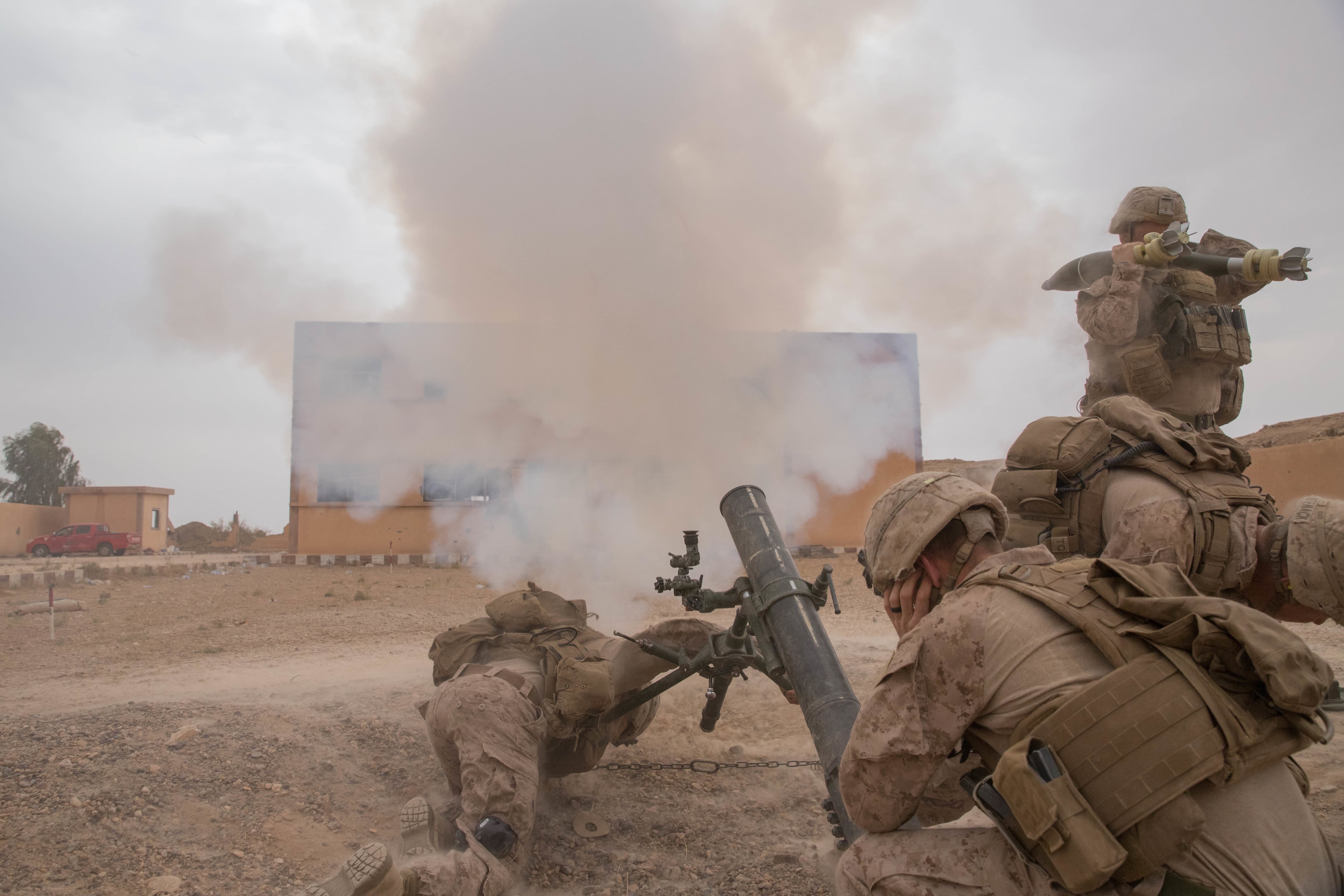Marines deployed to Iraq and Syria in the past several years largely have been relegated to adviser and combat support missions — blasting artillery at ISIS militants.
But their support functions by no means has sidelined them from the dangers of front line combat operations.
Evidence of this is the 47 Purple Hearts approved by Marine Corps Forces Central Command for wounds sustained in Iraq and Syria since January 2016. MARCENT gave this figure to Marine Corps Times.
Only a small handful of those Purple Hearts have been made public — partially due to the Corps’ tight-lipped policy on discussions surrounding ongoing operations in Iraq and Syria.
For perspective, the Corps has publicly announced only about five Purple Hearts for 2018 operations in Syria — and three of those have come just this fall, in an announcement in a recent Marine press release.
Several other Marine Purple Hearts dating back to 2016 have been made public via the Defense Department’s imagery site known as DVIDS.
The Commandant of the Marine Corps Gen. Robert B. Neller can be seen pinning a Purple Heart on a Marine from the 26th Marine Expeditionary for wounds sustained in support of Operation Inherent Resolve in 2016.
However, some of the Corps’ operational security concerns are rational. The Corps has been operating in small groups all across the U.S. Central Command area of operations — at times a single battalion has covered down on three different war zones, spread thinly across remote fire bases.

But the number of approved Purple Hearts over the last two years does provide a glimpse into the level of combat seen by U.S. forces operating in Iraq and Syria.
During that period the coalition made rapid gains against ISIS militants, ultimately liberating major urban strongholds such as Fallujah and Mosul in Iraq and Raqqa, Syria.
And the Corps played no small part in the liberation of that territory, especially the capture of ISIS’ self-declared capital of Raqqa.
The ISIS stronghold was liberated in fall 2017, following several months of urban street to street fighting by U.S. partner forces known as the Syrian Democratic Forces with the aid of U.S. special operations advisers.
Marines supplied around the clock artillery fire in support of SDF operations to cleanse the city of ISIS militants. The Marine artillery battalion managed to fire more artillery rounds than any since the Vietnam War.
Over a five-month period, the Marines fired nearly 35,000 rounds.

The coalition has since backed ISIS into a small pocket along the Euphrates River in Syria. It’s the last major stronghold for the ISIS militants.
But the fight to clear the last pocket of ISIS fighters has grounded into a slog, as SDF fighters backed by coalition air and artillery support have struggled to clear the rural landscape dotted with ISIS bunkers and tunnels.
At the tail end of October, the Associated Press reported that ISIS had launched a massive counteroffensive in eastern Syria, killing 40 SDF fighters and capturing several alive.
The coalition told AP that ISIS took advantage of a sandstorm, limiting air support.
ISIS attempted the same feat in at the end of November but was slammed by coalition artillery support.
Over the past month and a half, the coalition has launched over 800 strikes on ISIS positions near Hajin, Syria, located in the middle Euphrates River valley.
“Combined with Coalition air support in the last two weeks alone, over 50 vehicles have been destroyed, 36 supply routes, 9 fighting positions, 4 command and control centers, multiple vehicle-borne improvised explosive devices, and multiple IED facilities destroyed,” Army Col Sean Ryan, a spokesman for Operation Inherent Resolve, told Marine Corps Times in an emailed statement.
Combat in the area this fall has been intense.
“The Syrian Democratic Forces have advanced into more territory once held by ISIS and are now into Hajin,” Ryan said. “The SDF has thwarted multiple counter offensives and there is no timetable as the SDF is being methodical in their approach.”
And the Corps has been right in the thick of things. Pictures on DVIDS highlighted some of those roles to include Marines firing mortars at ISIS militants in Deir Ezzor province, Syria from a remote outpost.

In November, the Corps publicly announced it had awarded three Purple Hearts to Marines supporting operations in Syria. The three separate award ceremonies were held between October and November.
Cpl. Tyler A. Frazier, a mortar Marine with 3rd Battalion, 7th Marines; Cpl. Brendon Hendrickson, an anti-tank missile Marine with 3rd Battalion, 4th Marines; and Cpl. Nathan Rousseau, a mortar Marine with 3/4, were all awarded Purple Hearts this fall for wounds sustained in Syria.
The Corps said in a command release that each Marine has fully recovered and returned to their units. Hendrickson and Rousseau are still both in Syria.
Shawn Snow is the senior reporter for Marine Corps Times and a Marine Corps veteran.




